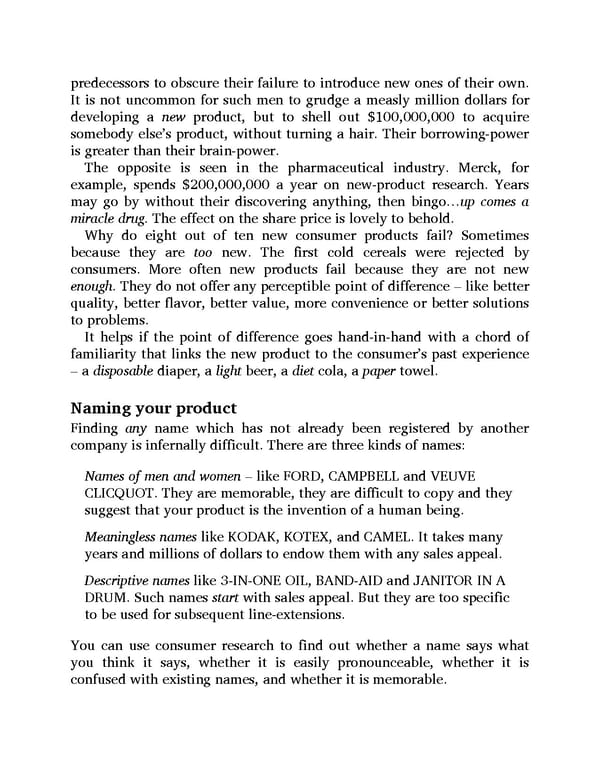predecessors to obscure their failure to introduce new ones of their own. It is not uncommon for such men to grudge a measly million dollars for developing a new product, but to shell out $100,000,000 to acquire somebody else’s product, without turning a hair. Their borrowing-power is greater than their brain-power. The opposite is seen in the pharmaceutical industry. Merck, for example, spends $200,000,000 a year on new-product research. Years may go by without their discovering anything, then bingo…up comes a miracle drug. The effect on the share price is lovely to behold. Why do eight out of ten new consumer products fail? Sometimes because they are too new. The first cold cereals were rejected by consumers. More often new products fail because they are not new enough. They do not offer any perceptible point of difference – like better quality, better flavor, better value, more convenience or better solutions to problems. It helps if the point of difference goes hand-in-hand with a chord of familiarity that links the new product to the consumer’s past experience – a disposable diaper, a light beer, a diet cola, a paper towel. Naming your product Finding any name which has not already been registered by another company is infernally difficult. There are three kinds of names: Names of men and women – like FORD, CAMPBELL and VEUVE CLICQUOT. They are memorable, they are difficult to copy and they suggest that your product is the invention of a human being. Meaningless names like KODAK, KOTEX, and CAMEL. It takes many years and millions of dollars to endow them with any sales appeal. Descriptive names like 3-IN-ONE OIL, BAND-AID and JANITOR IN A DRUM. Such names start with sales appeal. But they are too specific to be used for subsequent line-extensions. You can use consumer research to find out whether a name says what you think it says, whether it is easily pronounceable, whether it is confused with existing names, and whether it is memorable.
 Ogilvy on Advertising Page 239 Page 241
Ogilvy on Advertising Page 239 Page 241